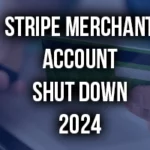The sphere of payments and fraud continually transforms to ensure enhanced security and better customer experiences.
Visa, one of the leading credit card networks, often introduces changes to its rules and regulations pertaining to the chargeback process. Recently, Visa launched a significant update, the Visa Compelling Evidence 3.0 (CE3.0), which could be beneficial for merchants equipped to fulfill its requirements.
Understanding and adhering to these ever-changing network rules is crucial for merchants. Compliance can protect you from potential fraud liabilities, while ignorance might lead to bearing the burden of fraudulent transactions, hefty penalty fees, or even endangering your merchant account.
E-commerce merchants, especially, should take interest in the CE3.0 as it sets fresh standards for providing compelling evidence to challenge unfounded fraud allegations in card-not-present transactions.
The Rationale Behind Visa’s Rule Update
Visa’s data indicates that the past few years have been profitable for card-not-present retailers, with a whopping 51% growth in transaction volume between 2019 and 2021.
However, this surge has also resulted in a 29% increase in disputes, from approximately 6 million in 2019 to nearly 8 million in 2021. An estimated 80% of these disputes are related to fraud, with the remaining 20% categorized under consumer disputes.
By focusing on fraud disputes, Visa is addressing two key issues.
Firstly, it aims to ease the concerns of merchants battling an escalating number of friendly fraud chargebacks.
Secondly, the improved detection of illegitimate fraud claims will lead to more precise fraud data models, contributing to better authorization decisions, robust fraud prevention, and numerous other benefits.

Introduced on April 15, 2023, CE3.0 is a novel method that enables merchants to contest wrongful chargebacks.
It allows them to leverage records of past transactions to refute fraudulent claims. Specifically designed for reason code 10.4: Fraud—Card-Absent Environment, CE3.0 aims to establish a concrete relationship between the merchant and the cardholder, confirming beyond doubt that the cardholder executed the transaction rather than any unauthorized third party.
Under Visa’s previous rules, merchants could dispute a reason code 10.4 chargeback by demonstrating at least one transaction in which the details matched the disputed transaction.
Despite this being considered sufficient proof to reverse the chargeback, issuers occasionally rejected the claims, leaving the merchant liable for the chargeback.
Following consultation with merchants and issuers, Visa introduced new criteria for contesting reason code 10.4 chargebacks.
Under CE3.0, merchants are required to furnish evidence of two previous undisputed transactions that adhere to the following specifications:
- The transactions should be between 120 and 365 days old at the time of the dispute. Original credit transactions may be less than 120 days old.
- Either the IP address or the device ID/fingerprint should match across all three transactions.
- An additional matching element from the list comprising IP address, device ID/Fingerprint, user ID, or shipping address is required across all transactions.
If the merchant can supply transaction data complying with these guidelines, the responsibility shifts to the issuer. If a chargeback has already occurred and CE3.0 is being used through Order Insight, evidence of product or service delivery to the customer is needed as well.

Merchants can leverage compelling evidence to challenge fraud claims during the pre-dispute phase or once a dispute has been filed, and the chargeback is accessible in Visa Resolve Online.
If the required data for two of these transactions is provided through the Order Insight system within two seconds of the request, the dispute is prevented from becoming a chargeback.
Here, the issuer is tasked with resolving the cardholder’s dispute, thus keeping your chargeback and fraud rate unaffected. However, this process necessitates an automated response, ruling out manual review.
In case the dispute has escalated into a chargeback and you wish to contest it, you’ll need to collaborate with your acquirer to identify the transactions with matching data elements, fill out the required forms, and submit your data to VROL.
If the data is complete and accurate, the chargebacks will be reversed. Although this won’t impact your fraud ratio, it could affect your dispute ratio.
Wrapping Up
While CE3.0 demands stricter compliance, it provides an advantage to merchants by transferring the liability back to the issuer.
This significant change ensures that the issuer can’t decline to reverse the chargeback if the merchant provides the necessary evidence. Thus, by adhering to CE3.0 requirements, you can effectively safeguard your business from friendly fraud and recoup a larger portion of your revenue.
Easy Pay Direct is the Fastest Safe way to Process Payments
Looking for reliable payment processing? Easy Pay Direct offers stable processing so you can worry less about payments and focus more on your business.
Take advantage of:
- Transaction Routing
- Chargeback Protection
- Decline Recovery
- A Single Point Of Contact
- Over 250 Integrations
- Recurring Billing & Mobile Payments
- Plus so much more










